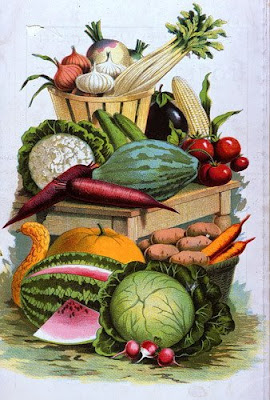
Digging for Yukon Gold ....
potatoes that is. In April I planted several rows of these delicious golden nugget seed potatoes along with a few rows of red 'new' potatoes. Yesterday a few were harvested, boiled, mashed with half and half, sprinkled with sea salt, and infused with a mix from my mini blender of butter and fresh basil. The result ... heaven! Add a quick stir fry of tender pork loin strips with freshly picked carrots, onion, and garden sugar peas .. and we dined on a delicious and easy meal. No gravy required ;)
Eating from the garden is akin to having dined on food kissed by a technicolor rainbow. The flavor explodes with rich 'colors' not found in store bought fare. All those years growing up .. eating canned veggies and hamburger helper ... years 'wasted' food wise ;(
My best childhood memories of food always drift back to visiting with relatives during the month of July that lived on farms in Illinois .. or had backyard gardens and home canned foods. We in the USA have grown accustomed to over processed, chemically altered, blah foods that hold no candle to nutrition and/or taste compared to home grown food. I encourage anyone that hasn't planted a garden to start planning for next year to give it a try. Even if you just try growing tomatoes and herbs in containers on your back deck or patio ... it's a start to wake up the inner gardener inside all of us.
artwork credit here














